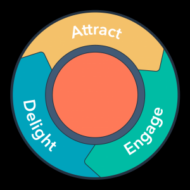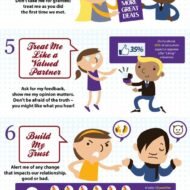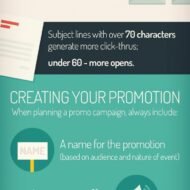Posted by Managementguru in Marketing, SEO, Social Media
on Jan 7th, 2017 | 0 comments

Why Inbound Marketing is Crucial to B2B Success Business consumers continue to reject traditional marketing strategies, while they are more interested in collecting info and learning about products before they buy without all the pressure of a regular sales pitch. Pic Courtesy : Hubspot Kindling the interest is the best bet to reach a customer and begin building a relationship that will be rewarding down the line. The important thing is that inbound marketing makes it apparent that you care about their needs and want to guide them through the decision-making process. Click this link to view and save popular Infographics on Inbound Marketing. Things You Didn’t Know About Inbound Marketing As we have moved into another fresh year, it is the right time to consider your inbound marketing efforts. What is Inbound Marketing? It is a marketing technique that focuses on helping your customers find you rather than going out to get your audiences’ attention. It is not about shouting out loud and propagating your product/ service’s unique selling propositions. It is about providing value to your customers – something that gives them information or is beneficial to them. It is about looking at various avenues for content marketing and driving traffic to your site. It is about channelizing blogs, podcasts, eBooks, videos, ezines, SEO, Social Media Marketing and all other types of content to invite your customer. Content marketing is the trend and doing it right is essential and not a choice. Read this blog post on B2B Marketing Strategies that will help small business owners to capture the millenial market through content-driven lead generation. http://triple20.com/b2b-marketing-strategies/ Creating Content that brings Huge Traffic + ROI Break down your content marketing strategy Pretty much any good content marketing strategy has some combo of these goals: Raise brand awareness Generate more search traffic (target specific keywords) Improve search rankings (get backlinks) Drive email subscriptions / generate leads That’s how you should approach content marketing. Focus on three or four main types of content: Social-viral content (drives traffic, builds awareness) Evergreen content (keyword-focused, performs well in search) Link-earning content (generates links from other sites and publishers) Lead-gen content (upgrades or downloadable pieces in exchange for email address) Each piece you publish should help you PULL OFF at least one of your goals, but it doesn’t have to accomplish all of them. Pic Courtesy: Inbound Marketing Landscape Capturing search traffic Evergreen content is purpose-built for search. It’s there to GIVE answers to search queries or give guidance on particular topics that are often searched by a target market. Today’s Investment, Tomorrow’s Profit The investments you make today in THE FORM of helpful resources for your customers through blogs, email content more actually turn into long term profits. The information you have compiled will continue to be searchable for all clients in the future and will continue to earn returns on a consistent basis. When done right, your web presence can be your single best salesman. What’s the Difference between Content Marketing and Inbound Marketing? Both types of marketing occur online. Both CONCENTRATE on building lasting relationships with leads, prospects, and customers. And they’re both focused on the creation of valuable content that educates and entertains audiences. Content marketing can improve brand awareness and visibility, generate leads, nurture leads, and ultimately convert them into customers who are ready to buy, and want to buy from your brand. Though inbound does rely heavily on content and it wouldn’t exist without it: it also includes other activities like, Marketing automation, Technical SEO, Product or service trials, Website design, and interactive tools all of which may fall outside of the scope...

Posted by Managementguru in Entrepreneurship, How To, Marketing, Social Media, Startups
on Dec 26th, 2015 | 0 comments

This list of top ten ecommerce tips will give you a fair idea on how to boost your online sales by tapping the emotional triggers of the consumers. Lead Generation and Conversion What are the Emotional Triggers that Make Customers Click and Buy? “People shop and learn in a whole new way compared to just a few years ago, so marketers need to adapt or risk extinction. Brian Halligan CEO, HubSpot. Consumer behavior is a hotbed of psychological research as it ties together issues of communication (advertising and marketing), identity (you are what you buy), social status, decision-making, and mental and physical health. What makes them Click and Buy Online? Have you ever given a thought about why customers leave your site without buying? You’ll be amazed to know the reasons behind all the lost customers for trivial but expensive mistakes from your end. Ok! Shoot…Let us cruise through one by one… There has never been a better time to start an online business. But starting and running a successful online store is hard work with many steps and decisions that need to come together at the right time. To help, we’ve put together a comprehensive resource list, hand-selected from our best content. This list will show you how you would research, build, launch and grow a profitable ecommerce business. 1. You Must Ask The Customer To Buy Now If you want customers to “buy now,” you should ask them to do so. Buy now is explosively powerful because shoppers are highly prone to making impulse purchases. Once you realize that this is common shopping behavior, you’re ready to ramp up your “buy now” strategy. Marketing researchers have discovered five major factors that cause a customer to “buy now”: 1. An overwhelming attraction to the product. 2. An intense need to buy the product at once. 3. Ignoring negative consequences that may arise from the purchase. 4. A feeling of excitement at buying the product. 5. Conflicting feelings of indulgence and self-control. 2. Use Models People Can Identify With If you’re selling clothing, jewelry, or accessories, one quick way to create a connection to your customer is to show your stuff on people they will identify with and like. Personal Branding Photoshoot Ideas This doesn’t mean you need to book Russian supermodels; it’s best if they look like your customers. This might mean funky and cool, like So Worth Loving. 3. Social Links People are more likely to purchase something if it’s recommended to them by someone they know and trust. Grow Your Business with Content Marketing So make sure that your product pages have links to Twitter, Facebook, Pinterest, and Google+ so that your customers can tell their friends about the great product they just found on your site. 4. Drive Sales with Persuasive Video Marketing They are the stores that have created consistently great video content around their products without spending fortunes on production. You too can match the quality of most of these videos using a good camera and a steady tripod, or with a single videographer. If you have a good video marketing strategy, it’s possible that you too can build a seven-figure business based on Youtube marketing. Successful stores have created the videos that people use to consult whether or not they buy their products. Need to figure out how to properly brew coffee? Watch the videos of Transcend Coffee. Need to know how to prune a fruit tree? Check out the videos of GrowOrganic Peaceful Valley. 5. Build A Massive Following On Instagram Used correctly, Instagram can be a highly-targeted, visual advertising channel for your brand. In fact, in a recent study it was discovered that Instagram provides...

Posted by Managementguru in How To, Marketing, Social Media, Startups, Strategy
on Dec 16th, 2015 | 0 comments

Email Marketing Techniques Email marketing has become one of the powerful sources of product promotion eventually generating more leads. Targeted emails can do wonders with regard to such lead generation and conversion. This article from Aweber precisely pin points the 200% user engagement that email marketing creates and the benefits that come along with it. The more the subscribers, the more the reach; its as simple as that. Bloggers, Product Promoters, Service Providers, Educational Institutions, Matrimonial sites and many more businesses along the vertical are beneficiaries of email promotions who are happily reaping the rewards. “How to go about it”, is the crucial question lingering in the minds of digital marketers and this session will definitely be helpful in finding the way out to increase sales conversions. Visit businessguru.aweber.com to grow your sales through email marketing. Let Your Subject Line be Catchy: Subject lines are crucial because they are the very first thing people see in their inbox. If it doesn’t intrigue them, it could also be the last thing they see of that email. Stat: “64% of people say they open an email because of the subject line.” More people open and engage with the newsletter when they know what would be covered. The insight provided by the title allow people to determine if it would be worth reading. When people knew ahead of time that they would be interested in what the email had to say, they engaged more with the content as well. Stat: “Personalized subject lines are 22.2% more likely to be opened.” The more direct subject lines were the clear winners. Though the creative subjects could be intriguing in the inbox, if people weren’t sure what they were going to gain from opening it, they were less likely to do so. Stat: “Subject lines fewer than 10 characters long had an open rate of 58%.” Some variables to consider: Length (does shorter or longer work better for your audience?) Personalization (including their name or other details in the title?) Use of Numbers (are they better spelled out or as numerals?) Question Marks and other icons (Eye catching or annoying?) Humor (Do people respond well to jokes or do they prefer a straightforward approach?) Scarcity tactics (Do people act on urgency?) As always, even if you think you know what your subscribers like best – it’s worth the test. For B2B companies, subject lines that contained “money,” “revenue,” and “profit” performed the best. What to avoid: In short, the spam filter. A few things to steer clear of: CAPS LOCK IN YOUR SUBJECT LINE Lots of punctuation!!!!!! Spammy words such as free, winner, or profits Any combination of these things Though these tactics might catch someone’s eye in their inbox, if they’re coupled with other spam concerns, they’ll be caught in the spam filter first. Stat: “7 in 10 people say they made use of a coupon or discount from a marketing email in the prior week.” What to do instead: Convince your reader, through the subject line, that your content is worth their time and won’t take up too much of it. According to Copyblogger, there are a few key things that accomplish this: “How to” headlines Headlines with numbers, indicating a list Simple, direct statements Headlines that sound like news, not an ad The use of “you” Stat: “72% of B2B buyers are most likely to share useful content via email.” Some Very Interesting Facts: Emails that include social sharing buttons have a 158% higher clickthrough rate. Women click 10% more often than men on mobile emails. Monday emails had the highest revenue per email. Email marketing spend grows 10% year over year. 40% of...






